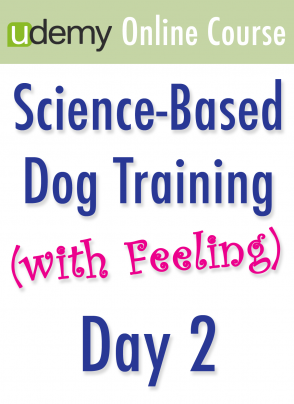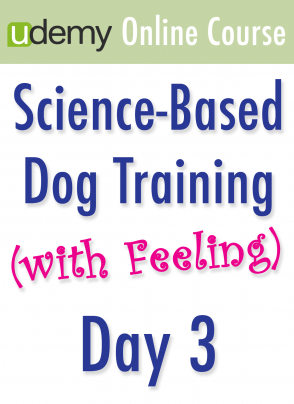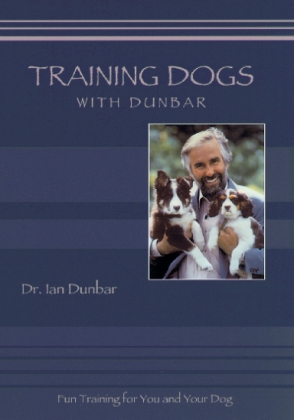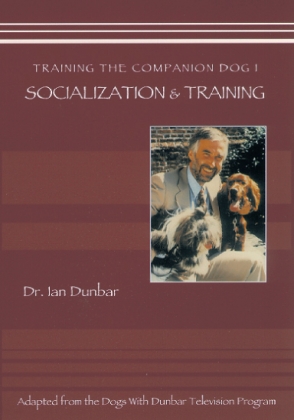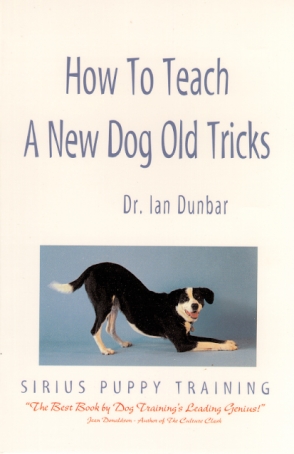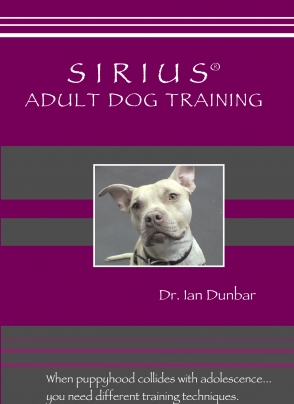Day 2: Reinforcement Schedules, Punishment and Rekindling the Relationship in Dog Training
Dog Training Is As Easy As 1-2-3-4 (And 1-2-3)
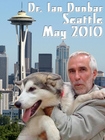
Well, the party’s over! After spending a most relaxing five weeks at home (with some mega sunny gardening days), I shall now pretty much be on the road until the 8th July, with seminars in Washington DC, Seattle, Tarrytown NY, Phoenix and England. I’ll have one week at home and then off to Japan for the opening of Hotel WOOF and then 10 days at home and then off to the South of France for a K9 GAMES Workshop. And then, two whole months at home! Whooooo Hoo! A bit of a busy schedule but I am so excited about my upcoming lectures. It feels so good to be back on the seminar circuit and with lots of ultra new information.
I have spent the past few years thinking about the major stumbling blocks in training that prevent owners from raising well-behaved, good-natured (people-friendly and dog-friendly) dogs that have reliable off-leash, verbal control without the continued need for training aids. These seminars will focus on all the key issues that I feel require prompt resolution. Some techniques, such as the basics of off-leash Lure/Reward Training, are so old that they are quite new again for many trainers. Additionally, I shall be addressing a whole bunch of new concepts that dramatically increase the speed and effectiveness of training and most important, resolve the punishment issue.
Lure/Reward Training is simply the quickest way to teach off-leash verbal control at a distance without the continued need for training aids. It is essential that dogs learn verbal commands otherwise they probably won’t respond when their backs are turned and cannot see a handsignal. And of course, they certainly won’t respond when 50 yards away chasing another dog or a rabbit.
The basic training sequence comprises: 1. Request, 2. Lure, 3. Response and 4. Reward.
Always train off-leash, so that there is no need to have to phase out difficult-to-phase-out physical (hand or leash) prompts. Give the request in a neutral tone so that the dog’s response does not become contingent on tone or volume. (Later on, teach the dog that shouted commands mean urgency and better treats. Otherwise, the first time that you shout for your dog to sit or come in an emergency, most likely the dog will be reticent to respond thinking that you are angry.) Remain absolutely stationary when verbally instructing the dog, otherwise the dog will learn to respond to your body language and intention signals, rather than the spoken request. One third of a second after giving a verbal request, lure the dog into position with a toy or food and as soon as the dog responds correctly, praise and reward.
Lure/Reward Training involves five stages, three of which are relevant to pet dog training. Stage 1 involves phasing out training lures, Stage 2 involves phasing out training rewards and Stage 3 involves enforcing compliance without force. The goal of Lure/Reward Training is to phase out training lures and rewards as quickly as possible and produce a self-reinforcing, internally-motivated dog that only requires occasional gentle verbal correction for complete and utter compliance and reliability.
Stage 1: After just half a dozen trials using a food or toy lure, put the lure in your pocket and lure the dog with your hand. Voila! Your hand movements have become a handsignal, which dogs learn faster than fast. If you do not do this but continue to use the same object (food or toy) as a lure and a reward, it will quickly become a bribe, which your dog will totally blow off in adolescence. Once the food is in your pocket to be used only as a reward, the training sequence becomes 1. Request, 2. Handsignal, 3. Response and 4. Reward.
After another dozen or so trials, on hearing the verbal request the dog will begin to anticipate the handsignal. When the dog responds after the verbal request but before the handsignal, it is time for celebration; the dog has learned the meaning of the word. Now the dog understands what you want him to do. In a sense, you are beginning to teach your dog ESL — English as a Second Language — English words for doggy behaviors and actions. The training sequence now becomes: 1. Request, 3. Response and 4. Reward.
Stage 2: From the outset, pay attention to the speed and precision of the dog’s responses; half will be above average and half will be below average. Obviously, there is no point in rewarding a dog for below average responses, unless of course you would like his behavior to get worse. Only reward the dog for above average responses, give better rewards for even better responses and give the very best rewards for the very best responses. You’ll find your dog’s behavior improves quickly from trial to trial.
Ask the dog more for less. See how many responses the dog will perform for just one food reward. To give you an idea, the average 12-week-old Golden Retriever puppy will gladly perform 20 puppy push-ups (down and sit) for just one treat. That’s 40 responses for one treat. Try to be very judicious when awarding food rewards. Without a doubt, feeding too many food rewards is the major reason for sloppy and unreliable behavior. If the dog is rewarded all, or most, of the time, he will learn that rewards come eventually regardless of how he does it and so, he will respond sloppily and only when he is ready — the Spoiled Puppy Syndrome.
As early as possible in training, empty your pockets and instead work only with Life Rewards — whatever the dog likes best. For example, have your dog sit before couch time, tummy rubs, hugs and kisses, opening doors, putting on his leash, letting him off leash, playing tug o’ war, or throwing a tennis ball or Frisbee. And of course, always have her sit for her supper. When walking him on leash or off, every 25 yards ask him to sit and then say, “Let’s go”. Similarly, when he’s playing with other dogs, every minute or so, ask him to sit and then say, “Go Play”. This way you can reward the dog with a walk or play session over and over. The dog will quickly learn that when he sits, all sorts of good things happen. In fact, your dog may now sit to try and train you to make good things happen. You now have a dog that wants to do what you want him to do. The training sequence has now become: 1. Request and 3. Response. Rewards of any kind are no longer necessary because for the dog, just doing it is reward enough.
We want to phase out rewards because we want to make sure that the dog’s compliance is not contingent on the prospect of an upcoming reward. However, once you are convinced that your dog is reliable in every conceivable situation, by all means praise and reward her as much as you like.
Please do not confuse phasing out training rewards to check that a dog’s reliability doesn’t require prospective reinforcement with the liberal use of food, toys, praise and petting for handling and gentling exercises, progressive desensitization and classical conditioning. You simply cannot give a dog too much praise or too many goodies during classical conditioning.
Stage 3: Even if your dog is pretty darn reliable, there will be times when he doesn’t comply. He’s not dissing you and he’s not plotting to dominate the world. Maybe he’s just distracted while selectively attending to an odor or a squirrel. No dog is 100% reliable anymore than any human is 100% reliable. However, there are a few occasions when absolute and immediate compliance is essential for the dog’s safety. One tip is to signal the level of urgency/emergency to the dog. Use the dog’s nickname when your request is merely a suggestion and compliance is optional, i.e., most of the time, but use the dog’s formal name when compliance is essential … and always follow up. This makes dog training much easier because you only have to be consistent part of the time. (Unlike computers, no human is consistent to for 100% of the time.) And how do you follow up? Verbally.
Verbal control is essential because most of the time your dog is of-leash (at home) and your hands are full and so, all other means of correction are impossible. Luckily, verbal corrections — instructive reprimands — are much (MUCH) more effective than any non-instructive physical punishment.
So many trainers think that punishment has to be painful or scary and so, some trainers elect not to punish at all because they don’t want to hurt or scare their dogs, yet other trainers always use painful and scary means to punish because they think that it is necessary. This is simply not true. I just spent a couple of days last week being filmed demonstrating the effectiveness of off-leash verbal control.
I think this is the “secret” that can reunite dog trainers. Trainers who don’t want to hurt or scare now have a viable and effective means to teach reliable, off-leash, distance, verbal control, so that their clients don’t have to go elsewhere to get results. Similarly, trainers that believed painful and scary stimuli were essential to the training process now have a viable and (much more) effective means to teach reliable, off-leash, distance, verbal control, so that their clients don’t have to go elsewhere to get results.

